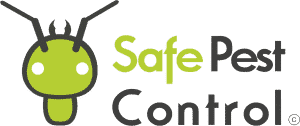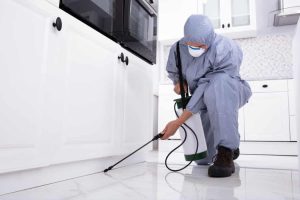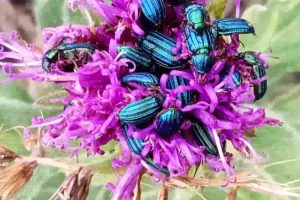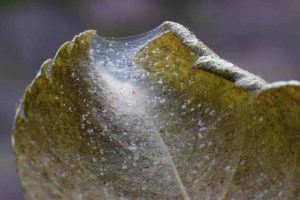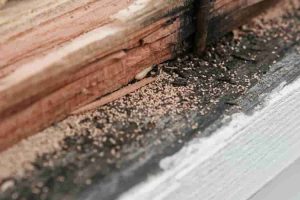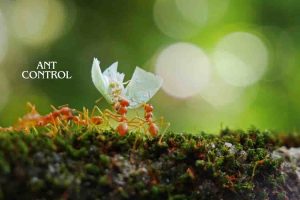When we think of household pests, rodents often come to the top of the list as they can cause significant distress and damage. A rodent infestation isn’t just a nuisance; it can also pose health risks, as rodents are known to carry diseases and contaminate food sources. Recognizing the signs of rodent activity is crucial for timely intervention and prevention of extensive damage.
As we become more aware of the environment within our homes, we notice certain indicators that suggest the presence of these unwelcome guests. Droppings, gnawed furniture, and a distinctive ammonia-like odor are telltale signs of an active rodent problem. Understanding and identifying these signs are the first steps in taking action against a rodent infestation.
Preventive measures are key in controlling rodent populations and keeping our homes pest-free. Sealing up entry points, maintaining cleanliness, and properly storing food can significantly reduce the chances of a rodent invasion. As we navigate through the complexities of pest control, it is important to stay informed and proactive to protect our living spaces.
Identifying Signs of Rodent Presence
To safeguard our homes from unwanted guests, it’s crucial to recognize the telltale signs of rodent infestation promptly. Let’s examine the evidence rodents tend to leave behind, unraveling their stealthy activities.
Droppings and Urine Trails
One unmistakable sign is the presence of droppings, which are often scattered along their travel routes. Look for these small, dark pellets in areas like the kitchen or pantry. Rodents are also known to leave urine trails, which can appear under UV light and give off a strong ammonia-like odor. These marks can help us track their movement patterns and frequent locations.
Gnaw Marks and Damage
Rodents need to constantly gnaw to keep their teeth from overgrowing, which results in visible gnaw marks on a variety of materials, including wires, wood, and plastic. We may find damage on food packages or utility lines, which heightens the risk of electrical fires and contamination.
Sounds and Nocturnal Activity
At night, when the house is quiet, we’re more likely to hear the sounds of rodent activity. Noises such as scratching, scurrying, or squeaking may emanate from the attic or inside walls, indicating their nightlife is in full swing.
Nesting Areas and Materials
Rodents make nests from shredded materials like fabric, paper, or insulation. Discovering these nesting materials in secluded corners, such as in attic spaces or behind appliances, suggests rodents are making themselves at home. We might also come across small openings they use to travel to and from their nesting areas.
In tracking these infestation signs, we enable ourselves to respond effectively and maintain the integrity of our homes.
Health Risks and Sanitation
When addressing rodent infestations within our environments, we must understand the considerable health risks they pose and the importance of maintaining strict sanitation practices. Rodents are known to carry a range of diseases, which can be transmitted to humans, and they are also notorious for contaminating food and surfaces, which necessitates immediate and effective action.
Diseases Transmitted by Rodents
Rodents can carry harmful pathogens that result in serious health risks for us. Some of these diseases include:
- Hantavirus: Contracted through contact with rodent urine and droppings, Hantavirus can cause severe respiratory distress.
- Salmonella: This foodborne illness can spread through the contamination of food sources with rodent feces.
Further reading on the spread of these diseases can be found in this detailed report on Rodent Infestations and the Spread of Infectious Diseases.
Contamination of Food and Surfaces
Aside from diseases, rodents pose a significant risk by contaminating food and surfaces, which can result in:
- Food Poisoning: Consuming food that has been contaminated by rodents can lead to symptoms like nausea and diarrhea.
- Allergic Reactions: Rodent dander, hair, and particles from their droppings or urine can contaminate surfaces, contributing to allergies and respiratory issues.
Achieving proper sanitation is critical in managing these risks. Thorough cleaning and disinfection of affected areas, as recommended by Environmental Assessment and Exposure Reduction of Rodents, are essential steps in safeguarding our health.
Rodent Proofing and Prevention
Before we delve into specific strategies, it’s important for us to acknowledge that effective rodent prevention involves a combination of sealing off entry points, managing food sources, and conducting regular inspections. Let’s take a look at how we can accomplish each of these tasks.
Sealing Entry Points
Rodents are adept at finding small openings to enter a property. To prevent their access, we must meticulously seal cracks and holes on the exterior of the building. Ensure that all gaps around pipes, vents, and utility cables are sealed with caulk or steel wool. Check for common entry points like gaps under doors, around windows, and at the roofline.
- Common Materials for Sealing: Steel wool, caulk, wire mesh, concrete.
- Areas to Prioritize: Utility entrances, eaves, and attic vents.
Food Storage and Waste Management
Properly storing our food and managing waste is crucial. Rodents are attracted to available food sources, so we must keep food in airtight containers and dispose of garbage regularly. Ensure that our trash bins have tight-fitting lids and are routinely cleaned to reduce food odors.
- Food Storage Tips: Use glass or metal containers with airtight seals.
- Effective Waste Management: Secure trash bins; remove food waste promptly.
Regular Inspection and Maintenance
Our pest management plan should include a schedule for regular inspections both inside and outside the property. Look for signs of rodent activity such as droppings, gnaw marks, and nests. Regular maintenance can also involve trimming trees away from the building and removing clutter that might offer shelter to rodents.
- Inspection Checklist: Droppings, gnaw marks, disturbed insulation.
- Maintenance Advice: Trim overhanging branches, declutter storage areas.
On-Time Service

5 STAR SERVICE BASED ON 100+ GOOGLE REVIEWS
PET & FAMILY FRIENDLY TREATMENT

ALL YEAR-ROUND PROTECTION
Take Back Control Now
8
REASON TO CHOOSE SAFE PEST CONTROL
- Guarantee protection all year-round
- 30 Years Collective Experience
- An impeccable reputation across Sydney's Suburbs
- Certified treatments & written Warranty On all work carried out
- Family Owned & Operated
- Rated #1 Pest Control In Sydney NSW
- No Mess, No Smell
- Family & Pet Friendly Treatments
REQUEST A QUOTE
